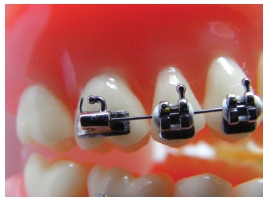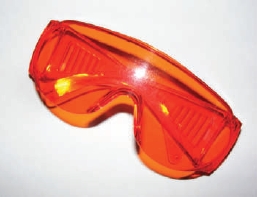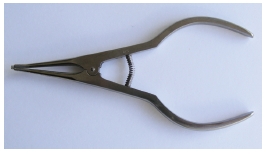Chapter 14
Fixed appliances–direct bonding
There are two methods of fitting fixed appliances:
- direct bonding
- indirect bonding
Direct bonding is the more routinely used technique and this chapter aims to highlight the nurse’s role in this process.
Different clinicians work in different ways.
- Some clinicians like to work ‘four-handed’ with a nurse
- This means that the nurse hands them the correct instrument at the appropriate time
- Nurses also cut and hand them ligatures, chain, coil, etc.
- This places the tray on the nurse’s side
- Some clinicians prefer to work from the tray themselves
- They work without the nurse’s direct help
- They may ask for chain, elastic sleeving, etc. (sometimes cut it themselves)
- The nurse hands a new arch wire
- The clinician often hands the nurse Mathieus, mosquitos, Twirl-ons, etc., whichever they use, for loading O-rings
- This places the tray on the clinician’s side
NB: It is important that at all appointments the patient’s model box is available with the study models within reach. Models should be taken out of the box before the treatment begins and the nurse puts on gloves.
COMMUNICATION
Nurses also communicate with and monitor the patient:
- ask them how they are
- ask them what’s going on in their life, etc.
- ask them what colours of O-rings they want
while the orthodontist refreshes their own memory reading or writing up the notes, etc.
If the patient is sitting in silence, they are less likely to be brave enough to mention:
- any concerns or problems they may have about their treatment or appliance
- any teasing that they may be experiencing
- that they have forgotten the rules, and have a breakage
ALLERGY AWARENESS
Orthodontic fixed appliance brackets are of stainless steel which can contain nickel, chromium and cobalt. Arch wires are also of stainless steel and nickel-titanium. It is important that any allergy to nickel should be recorded as part of the general medical history and clearly marked on the notes.
ORAL PIERCING
It has become very fashionable for patients to have oral piercings. These can vary:
- from a discreet stud in the lip
- to one or more large lip rings
- through to unilateral or bilateral tongue studs
The patient may or may not be asked to remove these during treatment.
The patient may not able to do this without using a mirror to take it out and replace it.
Patients need to be advised:
- that there is a chance their metal jewellery might damage the appliance, e.g. if it is ‘clicked’ against a palatal arch
- that the metal might damage the teeth, especially the incisal edges
- that the metal might sit in space closure sites
- that if sharp, the jewellery might puncture the clinician’s glove
LOCAL ANAESTHETIC
Local anaesthetic delivered by syringe is very rarely needed when fitting or adjusting appliances.
Topical anaesthetic can be used if required.
FITTING A FIXED APPLIANCE USING THE DIRECT BONDING TECHNIQUE
The patient has the molar bands and the brackets fitted onto each tooth individually.
This can be done in four ways and depends on:
- the preferences of the clinician
- the age and capabilities of the patient
- fitting times in and around any dental extractions that are required
Method 1
- The patient comes in to have the separators placed
- At the next visit, these are removed and the bands fitted and cemented
- At the third visit, the brackets are bonded
Method 2
- The patient comes in to have the separators placed
- A week later, they have the bands and brackets fitted in one visit
Method 3
- The patient has the separators fitted at the same visit as the brackets
- At the next appointment, they have the separators removed and the bands fitted and cemented
Method 4
- The patient has upper and lower brackets, but with buccal tubes bonded on all first molars instead of molar bands fitted on a single visit
In cases where the patient is planned to have orthognathic surgery, bands are fitted to the first (and usually) second molars
In these patients, hooks can be incorporated into the brackets (Figure 14.1) on canine and premolar teeth. Some clinicians prefer to fit crimpable hooks directly onto the arch wire prior to surgery
NB: When fitting brackets with composite adhesive material, a light source is used.
Figure 14.1 Hooks on brackets.

Figure 14.2 Safety glasses for use with light-emitting diode light.

It is important that the patient, orthodontist and nurse wear protective glasses (Figure 14.2) that have orange tinted lenses at all times when they are curing bracket adhesive. No one must look directly at the blue light. Parents in the surgery must either be asked to sit in the waiting room or to look away whilst curing takes place.
METHOD 1–THREE VISITS
First appointment–putting in the separators
The nurse needs to prepare:
- the patient’s clinical notes
- mouth mirror
- elastomeric separators
- separator placement pliers (Figure 14.3)
- floss
- a follow-up appointment
Figure 14.3 Separating pliers.

Procedure
The nurse:
- ensures that the patient and staff have appropriate personal protection
- makes sure that the patient is seated comfortably
- establishes which teeth are to be banded at the next visit, as this indicates how many separators are needed
- gives the clinician the separators of their choice, loaded on pliers
- after they are placed, explains to the patient that:
- separators may feel strange, like a piece of food has become wedged between their teeth
- this feeling will go after a few hours but they may feel some discomfort on these teeth for a day or two
- they cannot use floss in the molar areas while separators are in position
- they will do no harm should they be accidentally swallowed
Second appointment–fitting and cementing the bands
The nurse will need to prepare:
- the patient’s clinical notes
- the model box
- mirror, probe and College tweezers
- prophylactic handpiece
- orthodontic prophylactic paste (oil-free) (Figure 14.4)
- rubber cup
- dental floss
- 3-in-1 syringe
- suction
- cheek retractors
- cotton rolls
- cement, pad and spatula
- box of bands (Figure 14.5) and spare College tweezers
- posterior band remover
- Mershon pusher (Figure 14.6)
- plugger
- bite stick
- Mitchell trimmer
- patient relief wax or medical-grade silicone
- hand mirror
Stay updated, free dental videos. Join our Telegram channel

VIDEdental - Online dental courses


